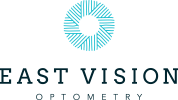Our children’s vision is arguably the most important sense as they grow and learn. Approximately 80% of what young children are taught at school is presented visually. So, it is expected that we place such a big emphasis on the importance of getting your son or daughter’s eyes checked early on in life.
Children tend not to detect their own vision problems – so it’s important for parents and teachers to pay close attention. Even if there are no complaints or concerns, we recommend that every child receives a comprehensive eye examination at least by the age of 5. Early detection of certain eye disorders is often critical for good outcomes.
Things that parents can look out for:
- Straining their eyes/ tilting their head to see
- Rubbing of their eyes
- Losing their place while reading
- Sensitivity to light
- Falling behind at school
- Headaches and tired eyes
- Sitting too close to the TV or holding book too close
- Closing one eye when concentrating
- Poor attention/ concentration or even misbehavior at school.
It’s important to remember that not all eye and vision problems can be seen or even noticed by children or even their parents. Kids will often think that what THEY see is what EVERYONE sees and thus they often will not complain.
A common example: Consider a child that may have one normal eye and one highly far-sighted eye. This child is likely to be able to read and watch TV without glasses, so they often will not complain, and in the absence of a ”turned” eye the parents often will have no clues either. This is a problem however because the highly far-sighted eye, if left untreated, will not develop the normal neurological links between the eyeball and the visual cortex in the brain. If untreated or undetected until the child is over 10-12 years old, this may cause permanent vision loss or vision restriction for the rest of the child’s life.
Common FAQs:
Do I need a referral for a children’s vision check?
There is no need for a referral! Simply give us a call or go online to and make an appointment!
Does my child need to be verbal?
Kids don’t necessarily need to be verbal. Many of the tests our Optometrists do are objective and don’t require the children to identify letters or numbers. For subjective testing, we have specialty kids eye charts. The amount of information we can gather is more commonly limited by the child’s attention rather than if they are fully verbal or not.
Some children show NO symptoms of poor vision or eye health. Early detection and intervention is critical for a child’s development not only visually, but socially also.
At What Age Should Children Have Their Eyes Examined?
We recommend children should be tested at least once prior to starting their schooling or kindergarten. This is regardless of if the child has any symptoms or not. Children then should be tested once every 2 years or even earlier depending on the condition of their eyes. With obvious consideration to having a young child seen to as soon as possible if you/parent notices any apparent issues.
What are signs of poor vision?
Some children show NO symptoms of poor vision or eye health. Early detection and intervention is critical for a child’s development not only visually, but socially also.
Parents should be mindful of signs that their child’s vision may have a problem. An eye may not see as well as the other if it turns or is crossed. Bad vision should be assumed if the infant is uninterested in faces or age-appropriate toys, or if the eyes rove about or jiggle (nystagmus). Squinting, excessive eye rubbing and tilting the head into an abnormal position are some other signals to look out for. Instead of complaining, babies and toddlers compensate surprisingly well, and tend not to say anything or complain about bad vision.
The School Already Checked My Childs Eyes, do they still need an eye test?
Yes!
School screening programs serve an important role in identifying eye problems in the community that may have otherwise gone unnoticed or undiagnosed. It is important to note however that this is not a full eye test and vision screening programs do not replace a full comprehensive eye test before the age of 5. They often only include a handful of broad (but important) tests, mainly focusing on visual acuity and binocular function. Vision screening programs openly recognise this and often when they supply results they will include a disclaimer explaining this also. Some studies have shown that up to 43% of children with vision problems can pass a vision screening test! A comprehensive eye exam will assess all the aspects of the visual system, importantly including a full health assessment with biomicroscopy and ophthalmoscopy.
What is Myopia (Short-sightedness) Control?
My child’s myopia is getting worse – they need a new prescription every year? Is this Normal? Although progressive myopia is common, the traditional treatment of prescribing regular glasses and doing nothing else is now considered inadequate treatment.
Myopia Control refers to the relatively new practice of using evidence based techniques to help slow down or even holt the progression of shortsightedness in children. There are many different techniques the Optometrist can use to achieve this. It is a rapidly changing field, and it is best to find an Optometrist with an interest in Myopia Control and to discuss all the up-to-date options with them.
I can’t seem to get my Child to Wear Their Glasses?
It may take some time for your child to get used to the glasses and feel relaxed wearing them. You will find glasses with integrated headbands for small children that can help keep the glasses in place. It is beneficial to be consistent when putting them on so that the child can become used to the feel of the glasses. Don’t worry if your child doesn’t immediately love their new glasses, encourage them to wear the glasses as long as possible and then given them a rest if they need it. A few hours later, or even the next day, try again, and again the next day. Slowly you should find their tolerance improve and eventually they should seamlessly become part of their life.
The most common complaint from a child’s reluctance to wear glasses is that something is uncomfortable, particularly for small children who can’t tell you what’s bothering them. It’s possible that the prescription is ether incorrect or too much for the child to handle easily. The glasses could also be too tight, too heavy or generally ill fitting. So after attempting a week or two of adaption unsuccessfully, it might be worthwhile to return to the Optometrist to ensure that the glasses are working as intended or fitting correctly.
When is it acceptable for a child to wear contact lenses?
Contact lenses can be a great help, particularly for children who are active or who often lose or break their glasses. Whether it is for full time use (usually special cases) or simply daily disposable wear for soccer practice, contact lenses can be a great solution to provide children with clear vision in different situations.
They are, however, a medical device that needs special attention and hygiene. If a child is not responsible enough to properly care for them, many different complications can occur such as eye infections or a scratched cornea. Most experts agree that contact lenses can be considered for children as young as 10-12 years old. Decisions are based on the child’s maturity and cleanliness, ability to handle the lenses and the confidence/ ability of the parents to help out. As it can vary from child to child its best to consult your optometrist.
What is a blocked Tear Duct?
Tearing or watering of the eyes may result from a tear duct obstruction because tears cannot drain properly. Mucus discharge or an accumulation of tears in one or both eyes can be signs of a blocked tear duct. Infected tears stuck inside the duct can cause a painful swelling in the inner corner of the eyelid. By six months of age, the membrane that causes the obstruction in infants would normally have opened. If this does not happen you can see an Optometrist for some advice, warm compress therapy and eye washes may be enough to clear the problems up, or your doctor can prescribe medication to help clear the blockage as well. In more severe cases, review by a Pediatric Ophthalmologist may be needed, your Optometrist can provide a referral if needed.




